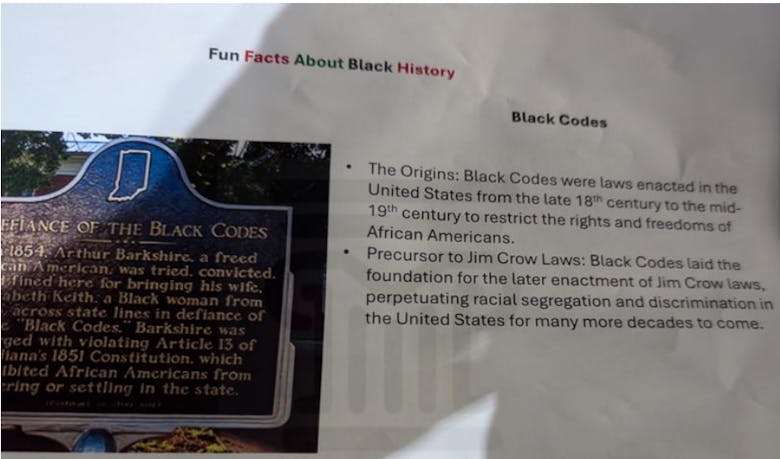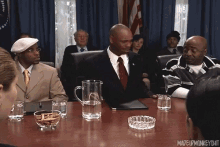get these nets
Veteran
Ex-General Mills employee alleges retaliation after he objected to ‘fun facts’ Black history flyers
July 1, 2025


An image from L. Lee Tyus Jr.'s' lawsuit of a flyer displayed at General Mills referencing the 1921 Tulsa race massacre as part of "Fun Facts About Black History." (Storms Dworak Law Firm)
A Black former General Mills employee is suing the company for discrimination and retaliation, alleging he was fired after objecting to Black History Month flyers that referred to racist atrocities as “fun facts.”
According to the lawsuit filed in Hennepin County District Court, L. Lee Tyus Jr., who worked at a General Mills facility in St. Paul for more than five years, said he raised concerns in February after the company posted flyers in the employee breakroom as part of its Black History Month recognition. The flyers, decorated in red, black and green — colors associated with the Pan-African flag — included brief descriptions of historic injustices, such as the 1921 Tulsa race massacre (also known as the Black Wall Street massacre) and the Black codes that preceded Jim Crow.
They were titled: “Fun Facts About Black History,” according to photos included in Tyus’ complaint.


An image of another flyer contained in the lawsuit shows the Black codes that preceded Jim Crow as "Fun Facts About Black History." (Storms Dworak Law Firm)
Tyus found the phrasing offensive, according to the lawsuit, and asked the plant’s human resources manager whether similar language would be used to describe atrocities involving white Americans. The HR manager allegedly responded: “No, it would just be labeled ‘American Tragedies.’”
Days later, Tyus said he raised the issue with the plant manager and his team lead, “explaining that the situation caused him to use his paid time off and exert time and energy to deal with General Mills’ response, stating: ‘Much like the massacre[,] I wish this didn’t happen and I could put energy into something actually ‘Fun’ or doing the work as I have for years before now.’”
When told no apology would be issued, he filed a formal complaint through the company’s internal ethics platform. He was placed on leave the same day and instructed to submit medical documentation if he wished to return.
“After learning he was being placed on an involuntary leave, Tyus Jr. responded that he was ‘being retaliated against for my beliefs and aren’t being allowed back to work which feels again like an injustice,’” the lawsuit said.
When his leave ended, Tyus found his building access deactivated, the complaint says. Soon after, General Mills’ senior employee relations lead contacted him to discuss the allegations. She encouraged him to share her contact information with others who might also have been offended by the flyers.
With his supervisor’s approval, Tyus printed flyers listing the employee relations lead’s contact information and placed them on the same breakroom tables where the original posters had appeared.
On March 19, General Mills had Tyus escorted from the building and terminated his employment, citing “multiple violations of General Mills’ standards of conduct and policies,” according to the complaint.
“General Mills has a national brand and a deep Minnesota footprint,” Tyus’ attorney, Naomi Martin, wrote in a statement. “That kind of presence comes with responsibility and a company of this size should be modeling what it means to support employees who speak up — not firing them.”
A spokesperson from General Mills wrote that while it cannot comment on pending litigation, “General Mills does not tolerate discrimination or retaliation.”
Tyus is seeking at least $50,000 in damages for each of three counts named in the complaint







